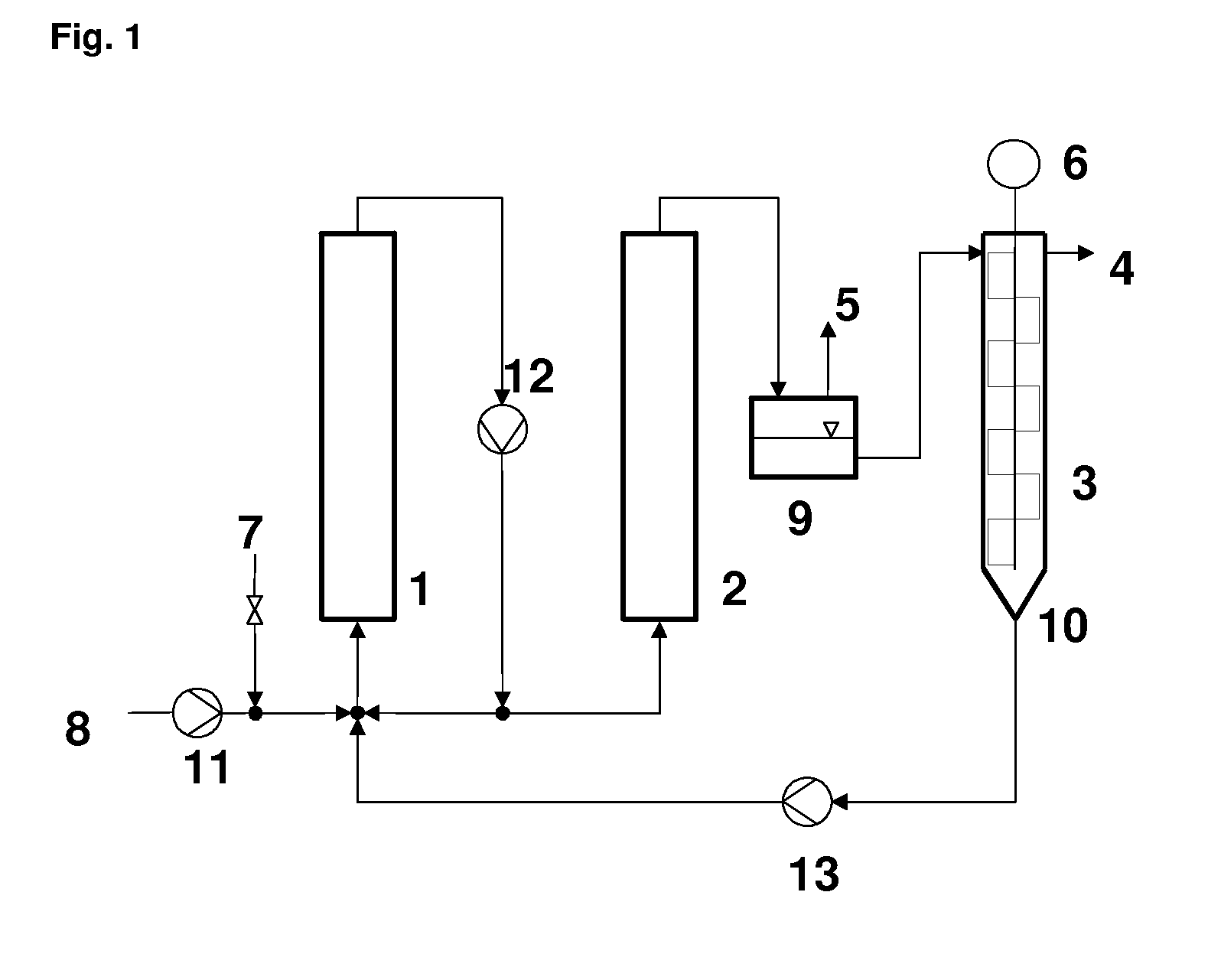Process for the preparation of cyclododecanone
a technology of cyclododecanone and cyclododecanone, which is applied in the preparation of organic compounds, chemistry apparatus and processes, and organic chemistry, etc., can solve the problems of limiting disclosures on this subject, requiring a series of distillation separations that are technically costly and inconvenient to achieve, and requiring a high degree of automation
- Summary
- Abstract
- Description
- Claims
- Application Information
AI Technical Summary
Benefits of technology
Problems solved by technology
Method used
Image
Examples
example 1
Batchwise Hydrogenation of Cyclododecatriene to Cyclododecene
[0166]A 2.5 l stirred autoclave was charged with 1 kg of trans,trans,cis-cyclododeca-1,5,9-triene, 150 mg of RuCl3.H2O, 20 g of triphenylphosphine, 12.5 g of 37% aqueous formaldehyde, 25 ml of ethanol and 2.5 g of acetic acid. After the reactor had been flushed with nitrogen and hydrogen, 15 bar of hydrogen were injected. The reactor was then heated with stirring. At a temperature of approx. 130° C., the reactor pressure reduced noticeably. The temperature was subsequently increased to 140 and 150° C.; the pressure was kept at 20 bar by injecting more hydrogen. On completion of hydrogen absorption, gas chromatography analysis showed a cyclododecene yield of 98.1% and a cyclododecane yield of 1.8% in the reaction effluent.
example 2
Continuous Hydrogenation of Cyclododecatriene to Cyclododecene
[0167]1 kg of cyclododecene, 150 mg of RuCl3.H2O, 20 g of triphenylphosphine, 12.5 g of 37% aqueous formaldehyde, 25 ml of ethanol and 2 g of adipic acid were charged into the first reactor (capacity approx. 1 liter) of an experimental apparatus according to FIG. 1. After heating the reactor system to 100° C., the circulation pump was switched on, the pressure was brought to 20 bar by means of hydrogen and a feed of 200 g of cyclododecatriene was established. The reaction temperature in both the first and the second reactor (capacity approx. 0.6 liter) was set to approx 140° C. After decompression to ambient pressure, the reaction effluent was separated in a thin-film evaporator in such a way that approx. 10 g / h of bottom product and 190 g / h of distillate were obtained. The bottom product was pumped back into the first reactor by means of a pump. After an operating time of 24 h, the distillate contained approx. 97% of cyc...
example 3
Reaction of Cyclododecene with N2O
[0168]A 250 ml autoclave was initially charged with 0.5 mol of cyclododecene (as a mixture having 64% trans- and 33% cis content, product from Example 2). The autoclave was then sealed and flushed with N2. Subsequently, N2O was injected into the autoclave up to 50 bar. The temperature was then increased to 250° C. (maximum pressure during the reaction: 84 bar). After a reaction time of 20 h, the autoclave was cooled and decompressed. Some of the contents of the autoclave had already crystallized. In order to analyze the product, the contents were melted at 60° C. and a homogeneous sample was taken. After dilution with toluene, the sample was analyzed by means of quantitative GC. The conversion of trans-cyclododecene was 98%. The conversion of cis-cyclododecene was 24%. The overall conversion of cyclododecene was 71%. The selectivity for cyclododecanone was more than 95%. The only by-products which could be detected by GC-MS were traces of cyclododec...
PUM
| Property | Measurement | Unit |
|---|---|---|
| Temperature | aaaaa | aaaaa |
| Temperature | aaaaa | aaaaa |
| Temperature | aaaaa | aaaaa |
Abstract
Description
Claims
Application Information
 Login to View More
Login to View More - R&D
- Intellectual Property
- Life Sciences
- Materials
- Tech Scout
- Unparalleled Data Quality
- Higher Quality Content
- 60% Fewer Hallucinations
Browse by: Latest US Patents, China's latest patents, Technical Efficacy Thesaurus, Application Domain, Technology Topic, Popular Technical Reports.
© 2025 PatSnap. All rights reserved.Legal|Privacy policy|Modern Slavery Act Transparency Statement|Sitemap|About US| Contact US: help@patsnap.com

